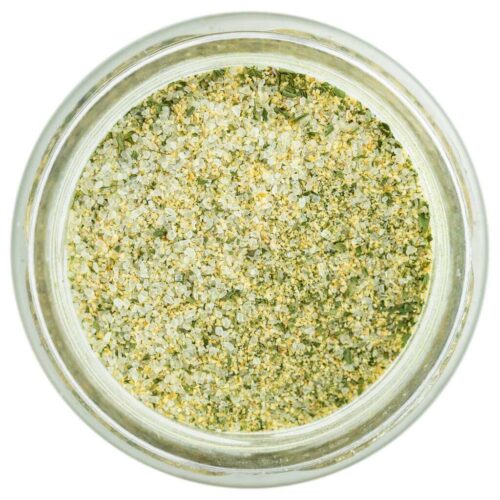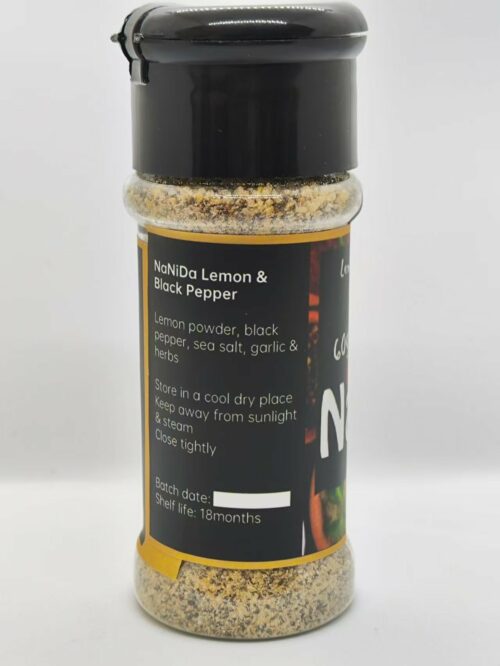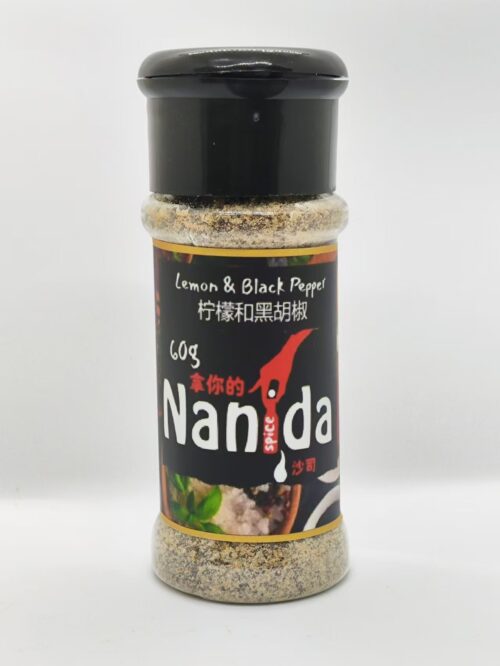-
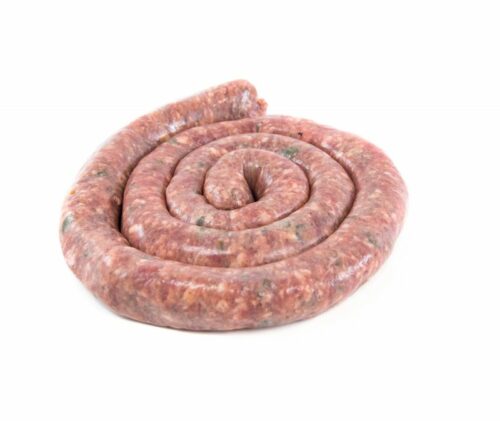 Every seventeenth-century cook at the Cape had a favourite recipe for boerewors (farmer’s sausage). During the twentieth century, many cooks began following recipes that predominantly used coriander and cloves seasoning. A possible reason for this preference might have been the Afrikaans cookbooks by Dijkman and D.J.H., which contain recipes with these spices as ingredients. It is a popular myth that boerewors was always made from a mixture of pork and other meats. Before the twentieth century when there were no fridges, boerewors prepared in summer consisted mainly of mutton and sheep’s tail fat and in winter it was made from pork and bacon. It boggles the mind that people made sausage at all without the luxury of mincing machines. The sausage meat had to be cut into very small pieces and mixed with the spices the night before. The following morning, when it was still cold, the fat or bacon was cut into cubes while the meat was finely minced with a large pestle. Then the meat and fat or bacon were mixed with vinegar and left for a while in order to absorb the spices before cleaned intestines were filled with meat. It was a huge job to scrap the intestines clean. If the one doing the scraping was clumsy, the intestines ended up with lots of holes, making them useless as sausage casings. Filling the intestines also had to be done by hand. The cheapest piece of filling equipment over which the intestines could be pulled and filled with meat stuffing was the horn of an animal. The sharp end of the horn was cut off and the horn hollowed out, rubbed and polished until smooth before it was used as a filling mechanism. After the intestines were filled, the boerewors had to be placed in brine to preserve it.
Every seventeenth-century cook at the Cape had a favourite recipe for boerewors (farmer’s sausage). During the twentieth century, many cooks began following recipes that predominantly used coriander and cloves seasoning. A possible reason for this preference might have been the Afrikaans cookbooks by Dijkman and D.J.H., which contain recipes with these spices as ingredients. It is a popular myth that boerewors was always made from a mixture of pork and other meats. Before the twentieth century when there were no fridges, boerewors prepared in summer consisted mainly of mutton and sheep’s tail fat and in winter it was made from pork and bacon. It boggles the mind that people made sausage at all without the luxury of mincing machines. The sausage meat had to be cut into very small pieces and mixed with the spices the night before. The following morning, when it was still cold, the fat or bacon was cut into cubes while the meat was finely minced with a large pestle. Then the meat and fat or bacon were mixed with vinegar and left for a while in order to absorb the spices before cleaned intestines were filled with meat. It was a huge job to scrap the intestines clean. If the one doing the scraping was clumsy, the intestines ended up with lots of holes, making them useless as sausage casings. Filling the intestines also had to be done by hand. The cheapest piece of filling equipment over which the intestines could be pulled and filled with meat stuffing was the horn of an animal. The sharp end of the horn was cut off and the horn hollowed out, rubbed and polished until smooth before it was used as a filling mechanism. After the intestines were filled, the boerewors had to be placed in brine to preserve it. -
 Every seventeenth-century cook at the Cape had a favourite recipe for boerewors (farmer’s sausage). During the twentieth century, many cooks began following recipes that predominantly used coriander and cloves seasoning. A possible reason for this preference might have been the Afrikaans cookbooks by Dijkman and D.J.H., which contain recipes with these spices as ingredients. It is a popular myth that boerewors was always made from a mixture of pork and other meats. Before the twentieth century when there were no fridges, boerewors prepared in summer consisted mainly of mutton and sheep’s tail fat and in winter it was made from pork and bacon. It boggles the mind that people made sausage at all without the luxury of mincing machines. The sausage meat had to be cut into very small pieces and mixed with the spices the night before. The following morning, when it was still cold, the fat or bacon was cut into cubes while the meat was finely minced with a large pestle. Then the meat and fat or bacon were mixed with vinegar and left for a while in order to absorb the spices before cleaned intestines were filled with meat. It was a huge job to scrap the intestines clean. If the one doing the scraping was clumsy, the intestines ended up with lots of holes, making them useless as sausage casings. Filling the intestines also had to be done by hand. The cheapest piece of filling equipment over which the intestines could be pulled and filled with meat stuffing was the horn of an animal. The sharp end of the horn was cut off and the horn hollowed out, rubbed and polished until smooth before it was used as a filling mechanism. After the intestines were filled, the boerewors had to be placed in brine to preserve it.
Every seventeenth-century cook at the Cape had a favourite recipe for boerewors (farmer’s sausage). During the twentieth century, many cooks began following recipes that predominantly used coriander and cloves seasoning. A possible reason for this preference might have been the Afrikaans cookbooks by Dijkman and D.J.H., which contain recipes with these spices as ingredients. It is a popular myth that boerewors was always made from a mixture of pork and other meats. Before the twentieth century when there were no fridges, boerewors prepared in summer consisted mainly of mutton and sheep’s tail fat and in winter it was made from pork and bacon. It boggles the mind that people made sausage at all without the luxury of mincing machines. The sausage meat had to be cut into very small pieces and mixed with the spices the night before. The following morning, when it was still cold, the fat or bacon was cut into cubes while the meat was finely minced with a large pestle. Then the meat and fat or bacon were mixed with vinegar and left for a while in order to absorb the spices before cleaned intestines were filled with meat. It was a huge job to scrap the intestines clean. If the one doing the scraping was clumsy, the intestines ended up with lots of holes, making them useless as sausage casings. Filling the intestines also had to be done by hand. The cheapest piece of filling equipment over which the intestines could be pulled and filled with meat stuffing was the horn of an animal. The sharp end of the horn was cut off and the horn hollowed out, rubbed and polished until smooth before it was used as a filling mechanism. After the intestines were filled, the boerewors had to be placed in brine to preserve it. -
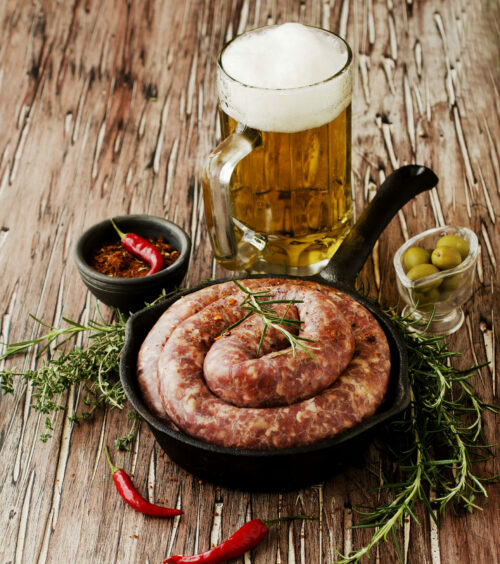 Every seventeenth-century cook at the Cape had a favourite recipe for boerewors (farmer’s sausage). During the twentieth century, many cooks began following recipes that predominantly used coriander and cloves seasoning. A possible reason for this preference might have been the Afrikaans cookbooks by Dijkman and D.J.H., which contain recipes with these spices as ingredients. It is a popular myth that boerewors was always made from a mixture of pork and other meats. Before the twentieth century when there were no fridges, boerewors prepared in summer consisted mainly of mutton and sheep’s tail fat and in winter it was made from pork and bacon. It boggles the mind that people made sausage at all without the luxury of mincing machines. The sausage meat had to be cut into very small pieces and mixed with the spices the night before. The following morning, when it was still cold, the fat or bacon was cut into cubes while the meat was finely minced with a large pestle. Then the meat and fat or bacon were mixed with vinegar and left for a while in order to absorb the spices before cleaned intestines were filled with meat. It was a huge job to scrap the intestines clean. If the one doing the scraping was clumsy, the intestines ended up with lots of holes, making them useless as sausage casings. Filling the intestines also had to be done by hand. The cheapest piece of filling equipment over which the intestines could be pulled and filled with meat stuffing was the horn of an animal. The sharp end of the horn was cut off and the horn hollowed out, rubbed and polished until smooth before it was used as a filling mechanism. After the intestines were filled, the boerewors had to be placed in brine to preserve it.
Every seventeenth-century cook at the Cape had a favourite recipe for boerewors (farmer’s sausage). During the twentieth century, many cooks began following recipes that predominantly used coriander and cloves seasoning. A possible reason for this preference might have been the Afrikaans cookbooks by Dijkman and D.J.H., which contain recipes with these spices as ingredients. It is a popular myth that boerewors was always made from a mixture of pork and other meats. Before the twentieth century when there were no fridges, boerewors prepared in summer consisted mainly of mutton and sheep’s tail fat and in winter it was made from pork and bacon. It boggles the mind that people made sausage at all without the luxury of mincing machines. The sausage meat had to be cut into very small pieces and mixed with the spices the night before. The following morning, when it was still cold, the fat or bacon was cut into cubes while the meat was finely minced with a large pestle. Then the meat and fat or bacon were mixed with vinegar and left for a while in order to absorb the spices before cleaned intestines were filled with meat. It was a huge job to scrap the intestines clean. If the one doing the scraping was clumsy, the intestines ended up with lots of holes, making them useless as sausage casings. Filling the intestines also had to be done by hand. The cheapest piece of filling equipment over which the intestines could be pulled and filled with meat stuffing was the horn of an animal. The sharp end of the horn was cut off and the horn hollowed out, rubbed and polished until smooth before it was used as a filling mechanism. After the intestines were filled, the boerewors had to be placed in brine to preserve it. -
 Every seventeenth-century cook at the Cape had a favourite recipe for boerewors (farmer’s sausage). During the twentieth century, many cooks began following recipes that predominantly used coriander and cloves seasoning. A possible reason for this preference might have been the Afrikaans cookbooks by Dijkman and D.J.H., which contain recipes with these spices as ingredients. It is a popular myth that boerewors was always made from a mixture of pork and other meats. Before the twentieth century when there were no fridges, boerewors prepared in summer consisted mainly of mutton and sheep’s tail fat and in winter it was made from pork and bacon. It boggles the mind that people made sausage at all without the luxury of mincing machines. The sausage meat had to be cut into very small pieces and mixed with the spices the night before. The following morning, when it was still cold, the fat or bacon was cut into cubes while the meat was finely minced with a large pestle. Then the meat and fat or bacon were mixed with vinegar and left for a while in order to absorb the spices before cleaned intestines were filled with meat. It was a huge job to scrap the intestines clean. If the one doing the scraping was clumsy, the intestines ended up with lots of holes, making them useless as sausage casings. Filling the intestines also had to be done by hand. The cheapest piece of filling equipment over which the intestines could be pulled and filled with meat stuffing was the horn of an animal. The sharp end of the horn was cut off and the horn hollowed out, rubbed and polished until smooth before it was used as a filling mechanism. After the intestines were filled, the boerewors had to be placed in brine to preserve it.
Every seventeenth-century cook at the Cape had a favourite recipe for boerewors (farmer’s sausage). During the twentieth century, many cooks began following recipes that predominantly used coriander and cloves seasoning. A possible reason for this preference might have been the Afrikaans cookbooks by Dijkman and D.J.H., which contain recipes with these spices as ingredients. It is a popular myth that boerewors was always made from a mixture of pork and other meats. Before the twentieth century when there were no fridges, boerewors prepared in summer consisted mainly of mutton and sheep’s tail fat and in winter it was made from pork and bacon. It boggles the mind that people made sausage at all without the luxury of mincing machines. The sausage meat had to be cut into very small pieces and mixed with the spices the night before. The following morning, when it was still cold, the fat or bacon was cut into cubes while the meat was finely minced with a large pestle. Then the meat and fat or bacon were mixed with vinegar and left for a while in order to absorb the spices before cleaned intestines were filled with meat. It was a huge job to scrap the intestines clean. If the one doing the scraping was clumsy, the intestines ended up with lots of holes, making them useless as sausage casings. Filling the intestines also had to be done by hand. The cheapest piece of filling equipment over which the intestines could be pulled and filled with meat stuffing was the horn of an animal. The sharp end of the horn was cut off and the horn hollowed out, rubbed and polished until smooth before it was used as a filling mechanism. After the intestines were filled, the boerewors had to be placed in brine to preserve it. -
 Every seventeenth-century cook at the Cape had a favourite recipe for boerewors (farmer’s sausage). During the twentieth century, many cooks began following recipes that predominantly used coriander and cloves seasoning. A possible reason for this preference might have been the Afrikaans cookbooks by Dijkman and D.J.H., which contain recipes with these spices as ingredients. It is a popular myth that boerewors was always made from a mixture of pork and other meats. Before the twentieth century when there were no fridges, boerewors prepared in summer consisted mainly of mutton and sheep’s tail fat and in winter it was made from pork and bacon. It boggles the mind that people made sausage at all without the luxury of mincing machines. The sausage meat had to be cut into very small pieces and mixed with the spices the night before. The following morning, when it was still cold, the fat or bacon was cut into cubes while the meat was finely minced with a large pestle. Then the meat and fat or bacon were mixed with vinegar and left for a while in order to absorb the spices before cleaned intestines were filled with meat. It was a huge job to scrap the intestines clean. If the one doing the scraping was clumsy, the intestines ended up with lots of holes, making them useless as sausage casings. Filling the intestines also had to be done by hand. The cheapest piece of filling equipment over which the intestines could be pulled and filled with meat stuffing was the horn of an animal. The sharp end of the horn was cut off and the horn hollowed out, rubbed and polished until smooth before it was used as a filling mechanism. After the intestines were filled, the boerewors had to be placed in brine to preserve it.
Every seventeenth-century cook at the Cape had a favourite recipe for boerewors (farmer’s sausage). During the twentieth century, many cooks began following recipes that predominantly used coriander and cloves seasoning. A possible reason for this preference might have been the Afrikaans cookbooks by Dijkman and D.J.H., which contain recipes with these spices as ingredients. It is a popular myth that boerewors was always made from a mixture of pork and other meats. Before the twentieth century when there were no fridges, boerewors prepared in summer consisted mainly of mutton and sheep’s tail fat and in winter it was made from pork and bacon. It boggles the mind that people made sausage at all without the luxury of mincing machines. The sausage meat had to be cut into very small pieces and mixed with the spices the night before. The following morning, when it was still cold, the fat or bacon was cut into cubes while the meat was finely minced with a large pestle. Then the meat and fat or bacon were mixed with vinegar and left for a while in order to absorb the spices before cleaned intestines were filled with meat. It was a huge job to scrap the intestines clean. If the one doing the scraping was clumsy, the intestines ended up with lots of holes, making them useless as sausage casings. Filling the intestines also had to be done by hand. The cheapest piece of filling equipment over which the intestines could be pulled and filled with meat stuffing was the horn of an animal. The sharp end of the horn was cut off and the horn hollowed out, rubbed and polished until smooth before it was used as a filling mechanism. After the intestines were filled, the boerewors had to be placed in brine to preserve it. -
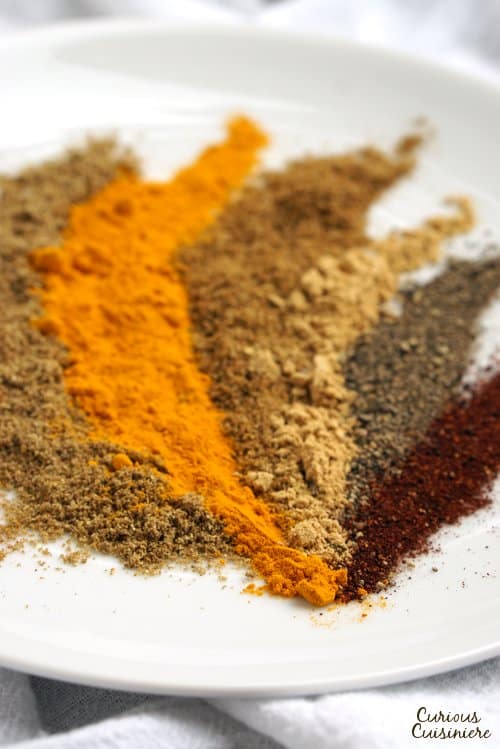
 Curry powder is a mixture of up to 20 different herbs and spices, including the commonly used: cardamom, chiles, cinnamon, cloves, coriander, cumin, fennel, fenugreek, mace, nutmeg, pepper, poppy seeds, sesame seeds, saffron, tamarind and turmeric (which gives curry its characteristic golden color). Curry powder is a blend of many spices, and comes in almost infinite varieties Curry powder is largely composed of turmeric. The word "curry" is widely believed to be a corruption of the Tamil word kari, variously meaning something like sauce, cooked vegetables or meat. Through the mass exportation of the condiment to the western table, throughout Europe and North and South America, Curry powder was then largely popularized during the nineteenth and twentieth centuries. In Indian cooking curry is freshly ground each day (making it far more pungent and flavorful than the mixes sold in the store). Each curry powder can have different component spices, in differing amounts--making each curry blend unique. Curry powder is used in soups, and of course, curries. It is also used as a thickening agent in fish and meat dishes. Curry powder also can be used simply to accent a normal meal: pasta, stew and spaghetti. Use in meats, poultry, sauerkraut, eggs, fish, vegetables, tomato juice. Curry powder is also used in dips, chicken salad, and fruit salads.
Curry powder is a mixture of up to 20 different herbs and spices, including the commonly used: cardamom, chiles, cinnamon, cloves, coriander, cumin, fennel, fenugreek, mace, nutmeg, pepper, poppy seeds, sesame seeds, saffron, tamarind and turmeric (which gives curry its characteristic golden color). Curry powder is a blend of many spices, and comes in almost infinite varieties Curry powder is largely composed of turmeric. The word "curry" is widely believed to be a corruption of the Tamil word kari, variously meaning something like sauce, cooked vegetables or meat. Through the mass exportation of the condiment to the western table, throughout Europe and North and South America, Curry powder was then largely popularized during the nineteenth and twentieth centuries. In Indian cooking curry is freshly ground each day (making it far more pungent and flavorful than the mixes sold in the store). Each curry powder can have different component spices, in differing amounts--making each curry blend unique. Curry powder is used in soups, and of course, curries. It is also used as a thickening agent in fish and meat dishes. Curry powder also can be used simply to accent a normal meal: pasta, stew and spaghetti. Use in meats, poultry, sauerkraut, eggs, fish, vegetables, tomato juice. Curry powder is also used in dips, chicken salad, and fruit salads.



